Here you will find photos of the plants we saw on our trip between Laguna Chapala and El Rosario, May 5-8, 2010. You can also see photos of the areas we visited on this page.
Plants are listed A-Z by family, then A-Z by species. Common names in English and Spanish are noted if available
Click on any photo for a larger image.
Families: A | B-G | L-Z
Lamiaceae (Mint Family)
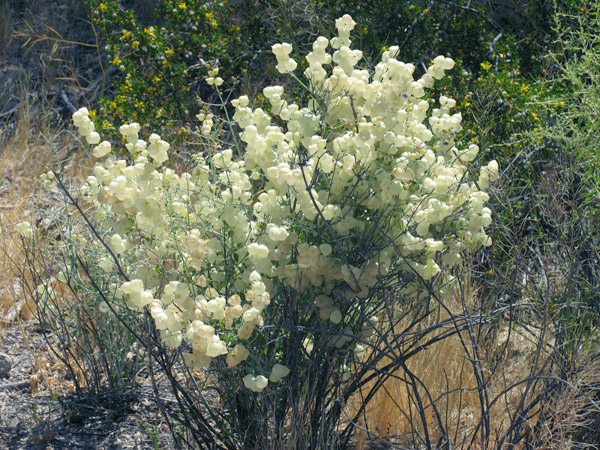
Scutellaria [Salazaria] mexicana. Bladder sage, Salvia. The white "bladders" are actually the calyx (structure below the petals).

Salvia apiana. White sage, Salvia. This is a rather large perennial, the one pictured here with old flower stalks and fruit.

Salvia columbariae. Chia sage, Chia, Salvia. Flowers are arranged in one or two clusters per stem, with each flower surrounded by spiny bracts (modified leaves)
Nyctaginaceae (Four O´ClockFamily)
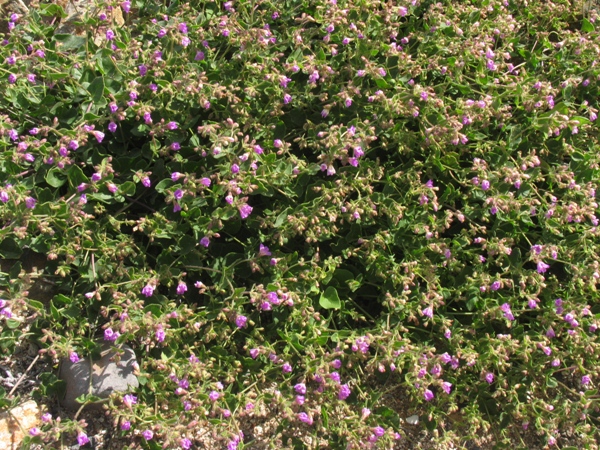
Mirabilis laevis var. crassifolia. California Four O'Clock, Desert Wishbone plant. This perennial has thickened, hairy & tacky leaves.
Polemoniaceae (Phlox Family)
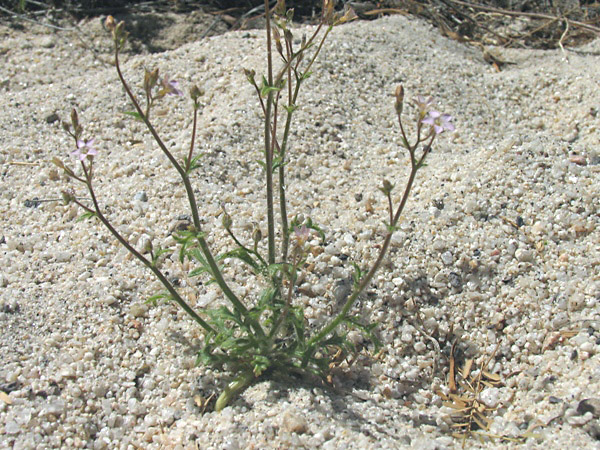
Gilia minor. Little gilia. This delicate annual, about 8", was growing along the edge of the sandy arroyo bed in a damp spot.
Polygalaceae (Milkwort Family)
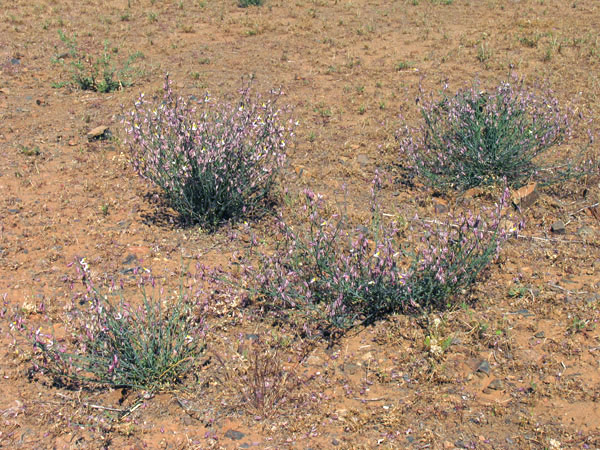
Polygala desertorum. These low (12-14", 30-35 cm), rounded endemic perennials were covered in spikes of purple and yellow flowers.
Polygonaceae (Buckwheat Family)
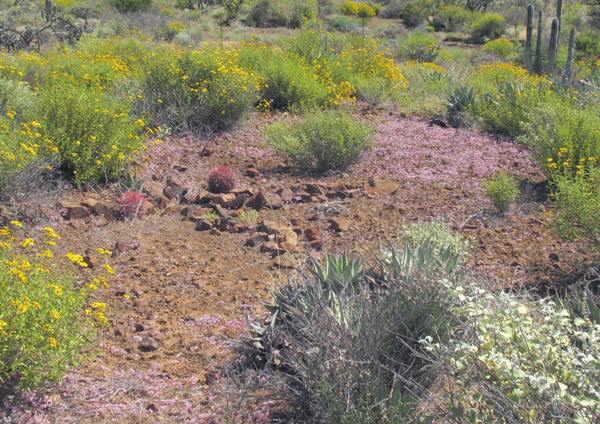
Chorizanthe fimbriata var. fimbriata. Fringed spineflower. A beautiful ground cover carpeting miles of desert from well north of Cataviña to El Rosario.
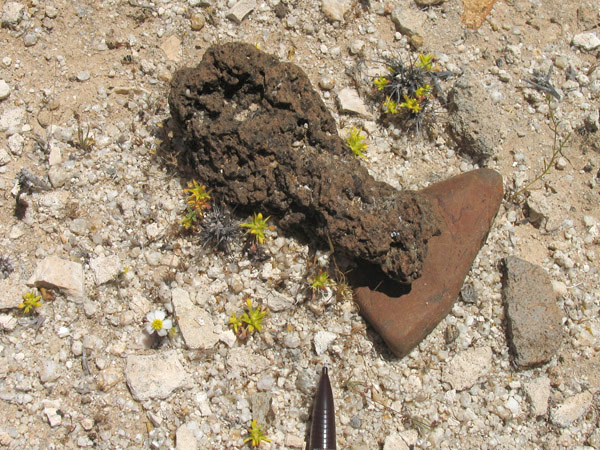
Chorizanthe rigida. Devil's spineflower. This is a tiny example of a desert perennial. I was actually drawn by the fish-shaped rock and almost missed the plant, blinded as I was by sunlight bouncing off the sandy soil and the clouds of gnats in my face.
Saururaceae (Lizard's-tail Family)
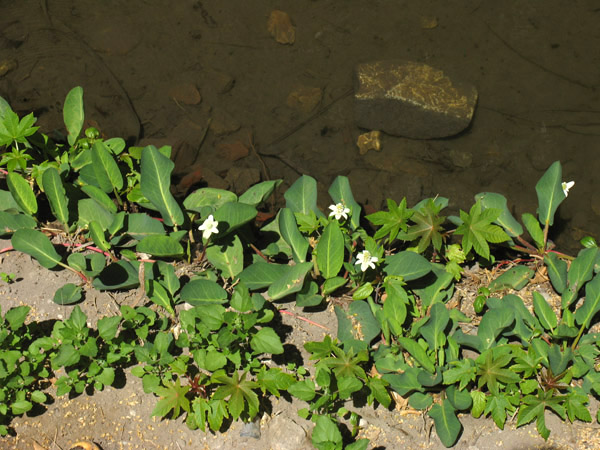
Anemopsis californica. Yerba mansa. A perennial herb, usually found in wet or damp soils, here along the acequia (irrigation canal) at the Misión de San Ignacio. They spread by a large, underground stem (rhizome).
Scrophulariaceae (Figwort Family)
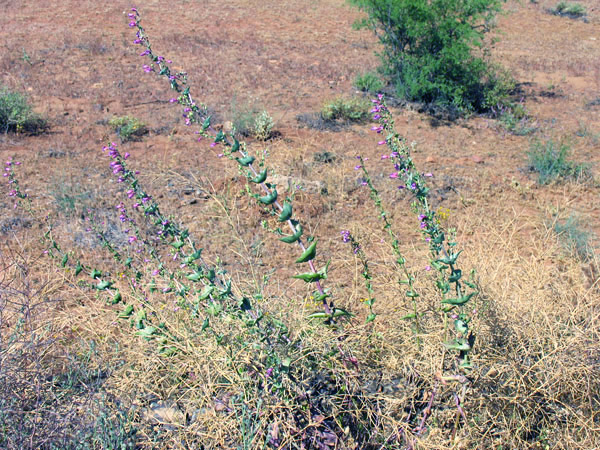
Penstemon spectabilis var. subinteger. Showy Penstemon/Pichel. An endemic perennial, common along the highway from around Km 110 to Km 100 S of El Rosario.
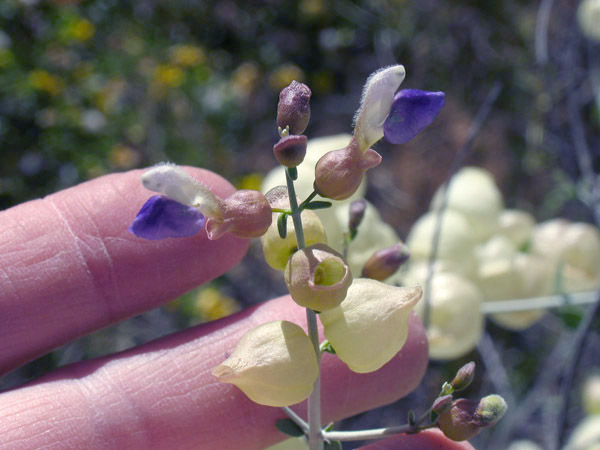
Scutellaria [Salazaria] mexicana. As the fruit mature, the calyx enlarges and at maturity is papery.

Salvia apiana. White sage, Salvia. Others nearby were flowering inconspicuously against the white sand of the arroyo.

Salvia columbariae. Chia sage, Chia, Salvia
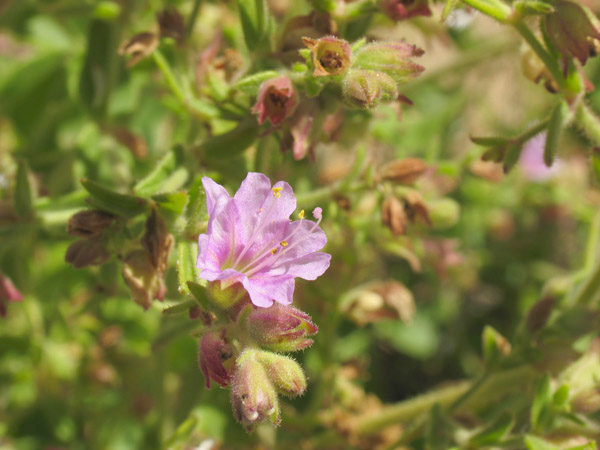
Mirabilis laevis var. crassifolia. Flowers close by mid afternoon.
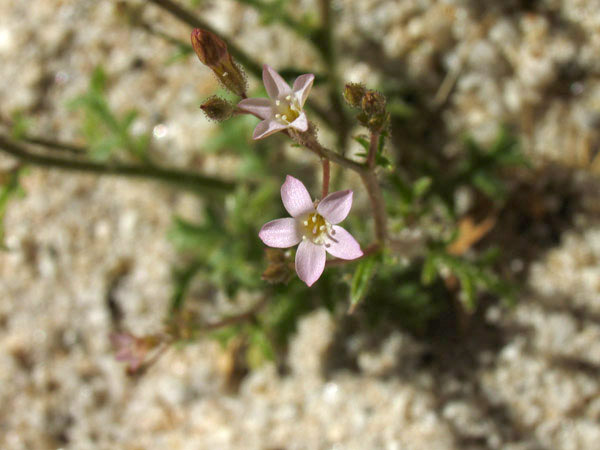
Gilia minor. Little gilia. Close up of flowers.
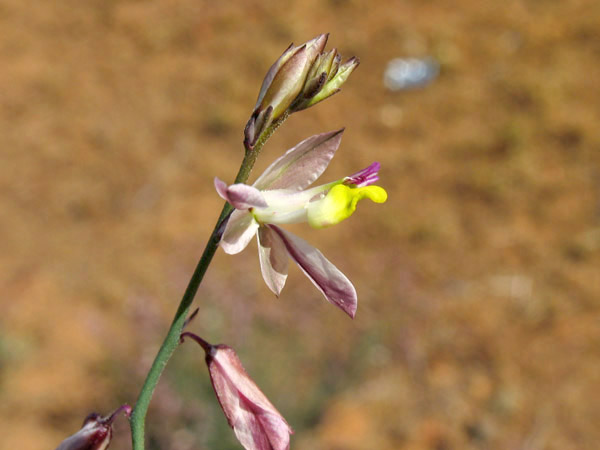
Polygala desertorum. Flowers are a little less than 1" (2 cm L). Two of the 5 sepals are enlarged and wing-like. There are two small white/purple lateral petals and a large keel petal that is white with a yellow beak.
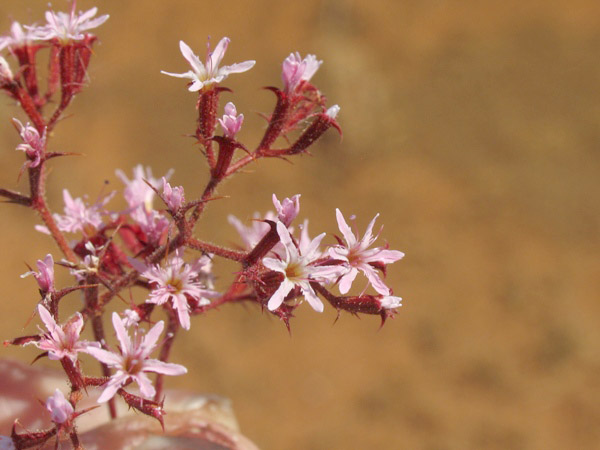
Chorizanthe fimbriata var. fimbriata. The rich color, seen from a distance on hillsides and in open areas between shrubs, is created by the deep red stems & pink to white flowers.
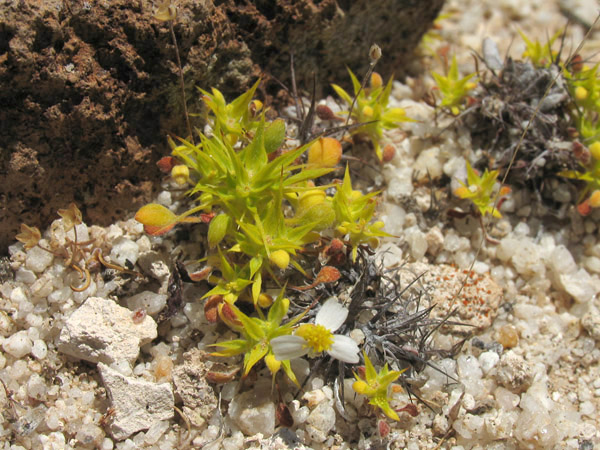
Chorizanthe rigida. Devil's spineflower. Like other species of Chorizanthe, the spines are extensions of the involucre from which the flower(s) emerge. This species has past seasons of dried involucres below the new flowers and the tiny, spoon-shaped leaves.
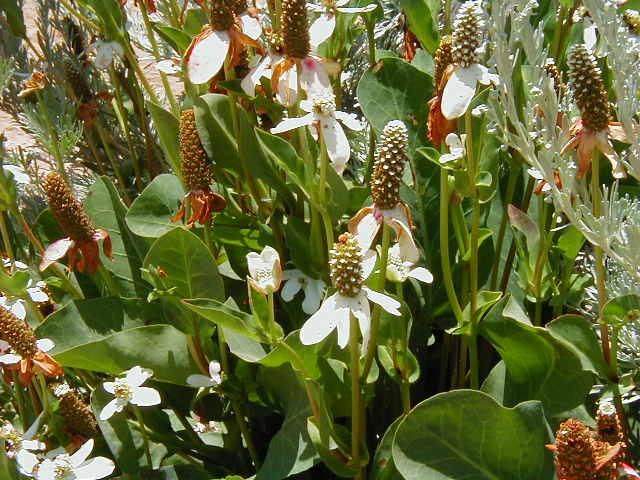
Anemopsis californica. Yerba mansa. The flowers actually lack petals. The spike-like inflorescense has 5-8 petal-like bracts below, and each flower on the spike has a short, white bract below it. The leaves are leathery.
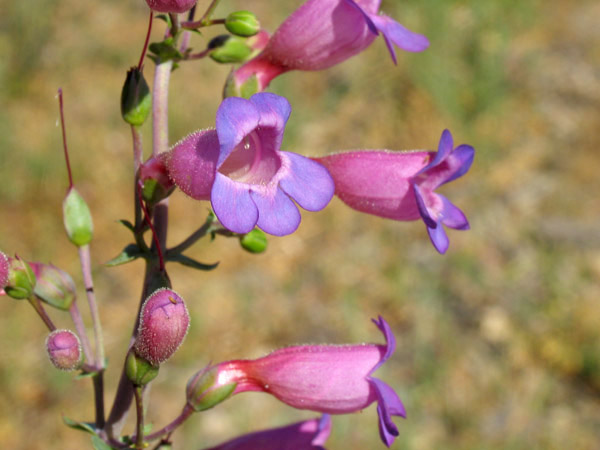
Penstemon spectabilis var. subinteger. Showy Penstemon/Pichel. The plant is commonly taller than 3 ft (1 m) with flowers 1-1.5" (2.5-3.5 cm) long. The leaves are somewhat thick & leathery with toothed margins.




















